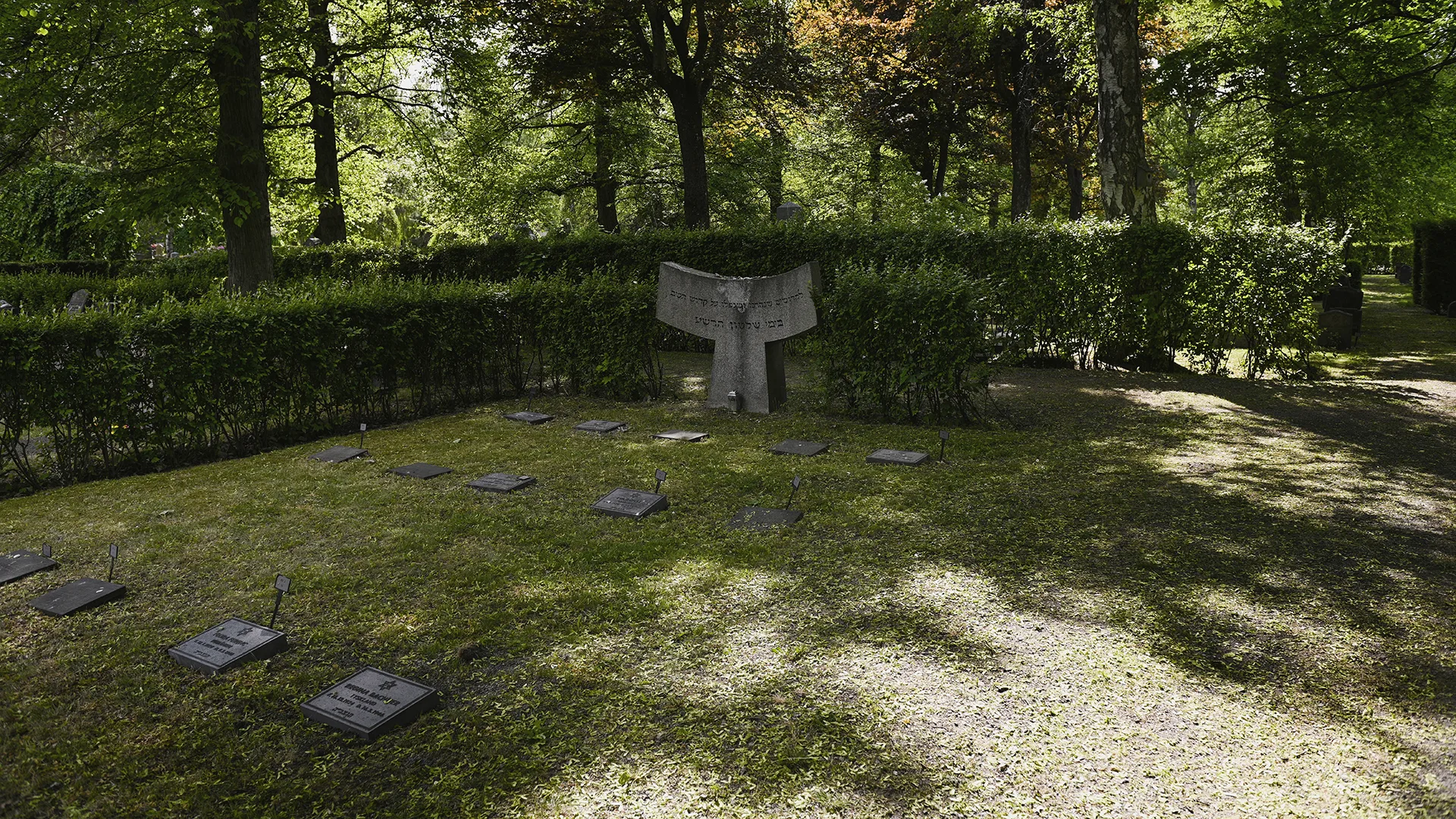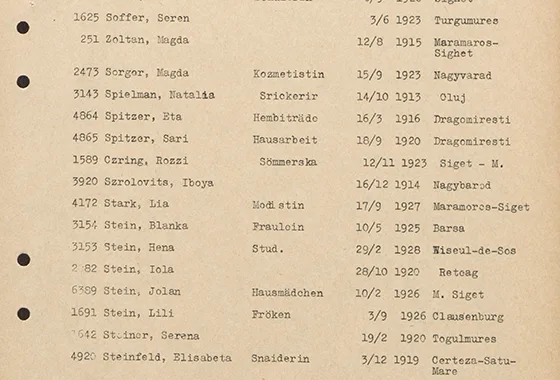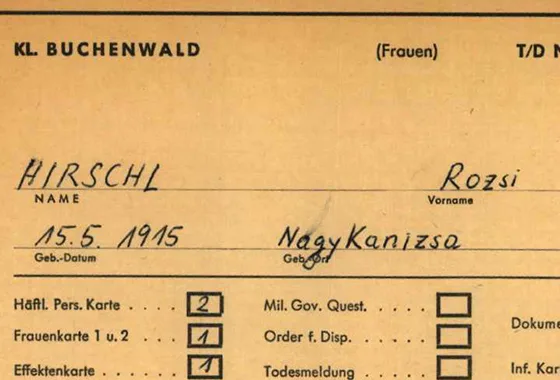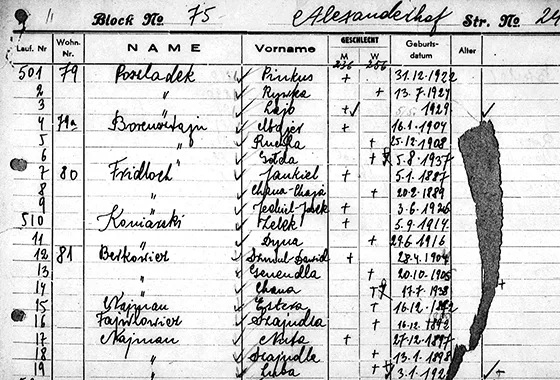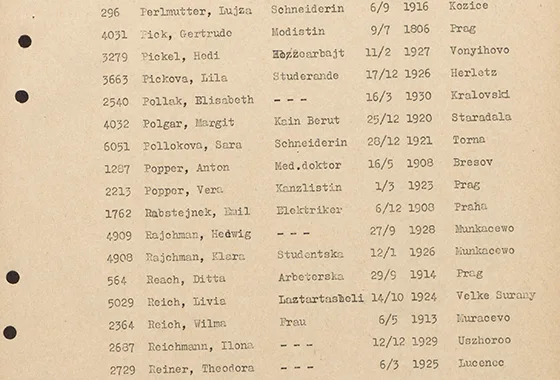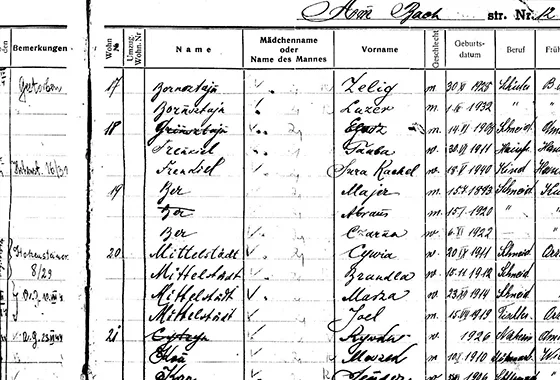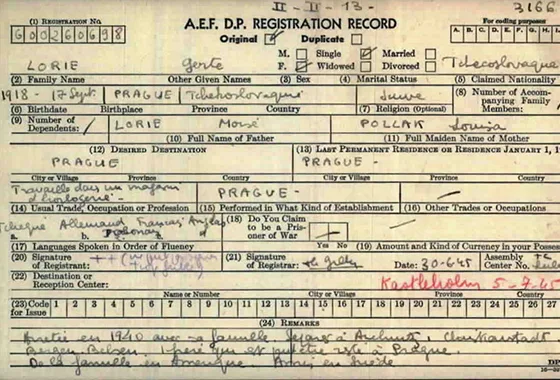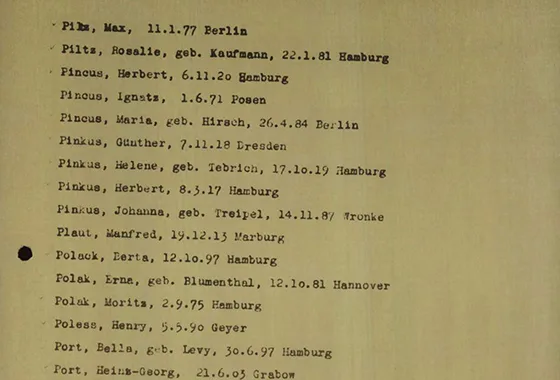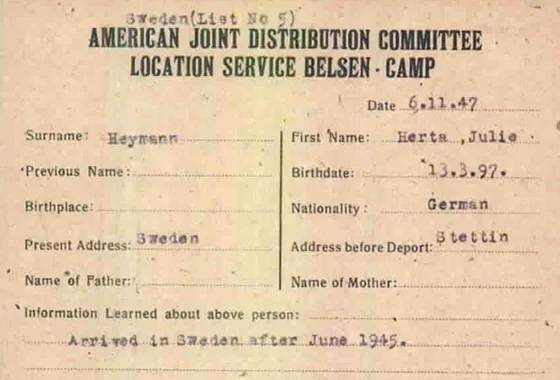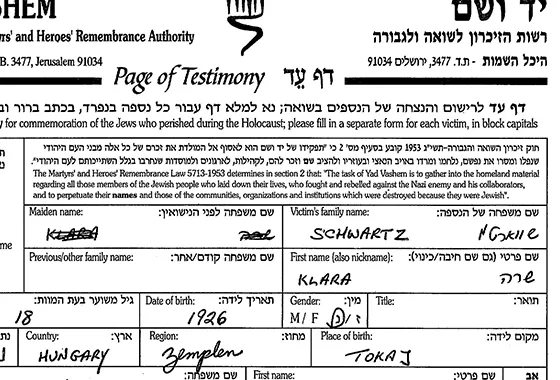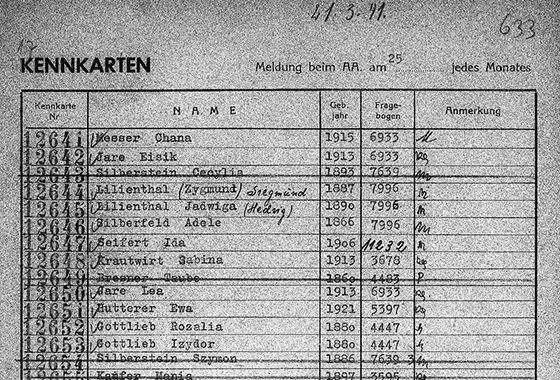Initially, the first people to die were buried in block K among the regular graves, in the graves that were next in line to be used; but just over a month after the boats started arriving, the Jewish community in Stockholm became aware of the extent of the tragedy and realised that more of the people liberated would die. That was why a decision was made to create a new block, block J, right next to the area where survivors had been buried until then. This new block was filled, row by row, with the liberated people who had died. A memorial to the people murdered during the Holocaust was erected in the new block in 1953. This memorial was designed by sculptor Margot Hedeman.
The survivors’ headstones are simple. They take the form of small, rectangular stones engraved with the person’s name, date of birth, date of death and country of birth. These graves may appear simple, but their symbolism is great. In Judaism, the grave is an important place, not just for whoever is buried there, but for the family and relatives as well. Jewish graves are eternal graves, an eternal monument to the person who lived, and hence an eternal monument for their family.
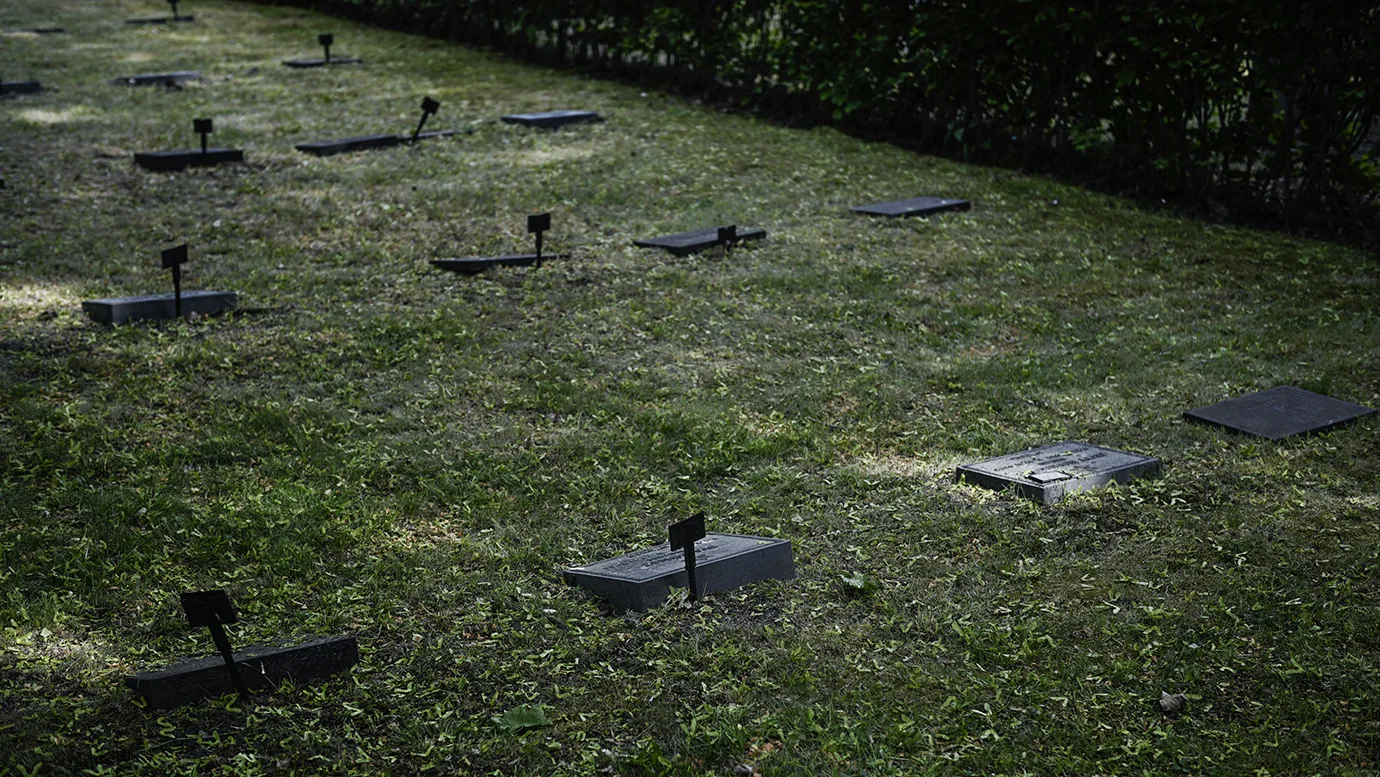
Each grave is both a physical memorial to a person and, symbolically, a grave for the entire family, a permanent memorial. A monument to the Jews that the Nazis wanted to erase from memory, from existence.
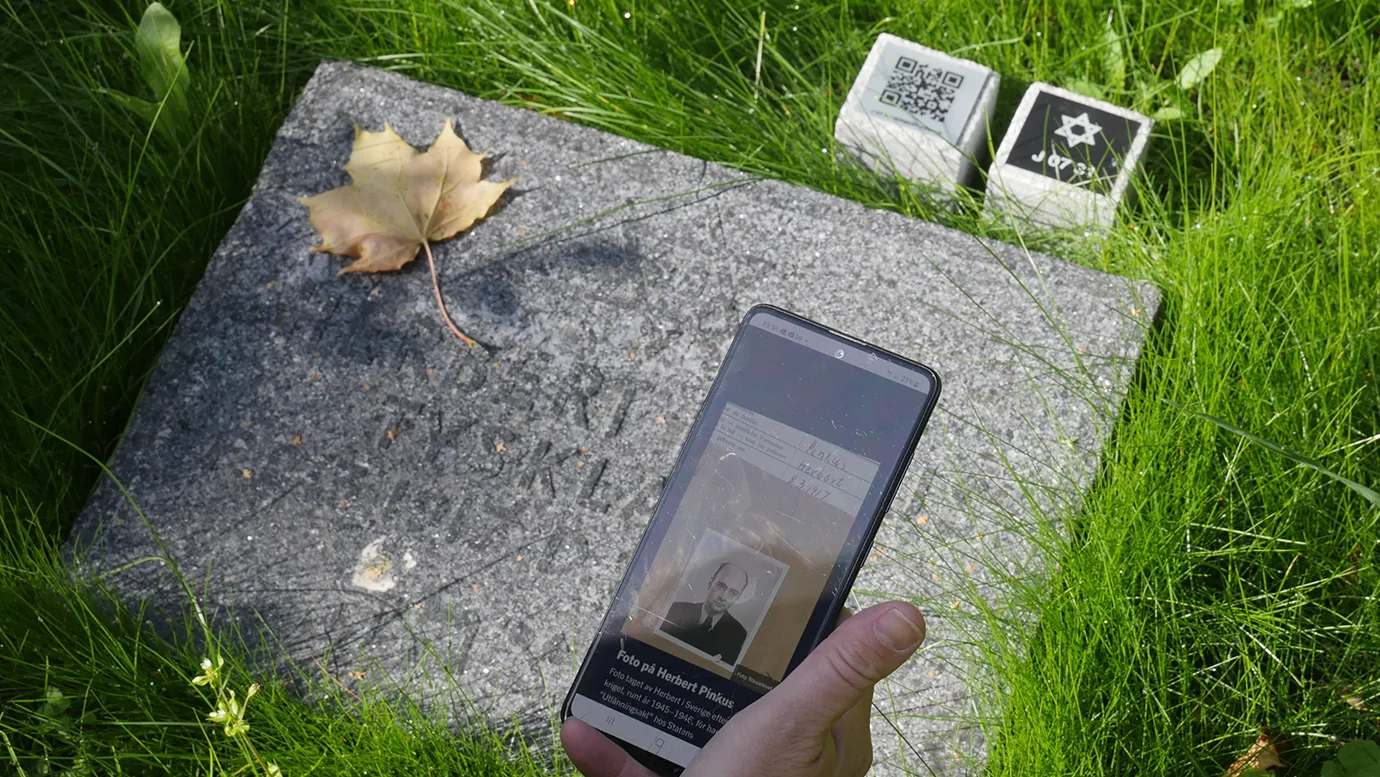
Visit the Northern Jewish Cemetery
The Northern Jewish Cemetery can be visited on your own. Adress: Judiska kapellets väg 1–3, Solna. Here you will find the graves and next to each grave there is a QR code that gives you the opportunity to read more about the lives of the buried and their families, texts that are published here on the web site.
The Northern Jewish Cemetery is open every day 24 hours a day except Shabbat and Jewish holidays.
Top photo: The Northern Jewish Cemetery in Solna, Stockholm. Photo: Miranda Solvang, Swedish Holocaust Museum/SHM.
